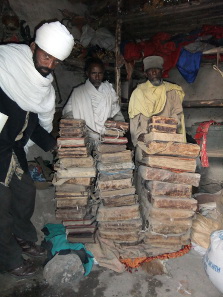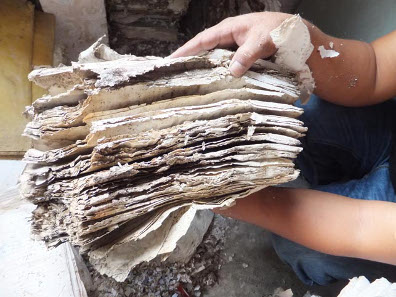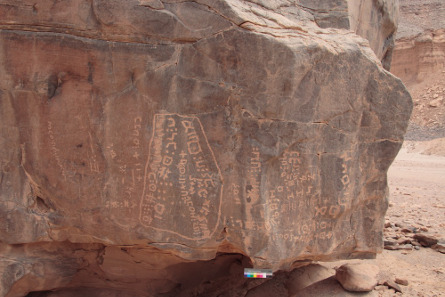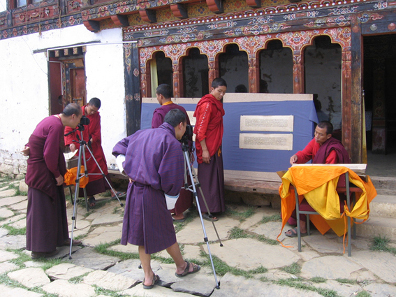by Björn Schöpe
April 2, 2015 – Humidity, fire, natural catastrophes, civil war or just poverty – archives face many threats. That is why the British Library has started the Endangered Archives Programme (EAP) ten years ago. Through grants this programme enables researchers all over the world to transfer mainly smaller archives into the digital world by use of scanners or digital cameras. The endangered media range from rock inscriptions to old photographs and newspapers to manuscripts and recordings on audio cassettes.
The originals of the digital images remain in the countries of origin, while a copy is stored at the British Library and, in a second step, are made available online. As the British Library announced in a press release in February 2015, the digital archive now comprises more than 4 million images.
Digitising the written legacy of north-eastern India’s Ahom Kingdom manuscripts written in the Tai Ahom script, no longer used in daily life. Endangered Archives Programme. Photography © Dr Stephen Morey.
EAP focuses on applications from poorer countries and non-public, smaller archives. Generally the programme does not aim at fully documenting big public archives. The British Library cannot provide financial resources for such big ambitions. By the way, the technical equipment, once the project is concluded, remains on site permitting the institutions to continue the work.
Browsing the online database one virtually travels through the history of humanity around the globe. As a matter of fact, you can actually do that by means of a map where all funded projects are localised.
The priests of May Wäyni monastery with their manuscripts, Ethiopia. Endangered Archives Programme. Photography © Professor Michael Gervers.
An important project aimed at rescuing medieval manuscripts in the Ethiopian monastery of May Wäyni.
Documents destroyed by the extremes of wet conditions and insect infestations in Mizoram – said to be the wettest place on the planet – northeast India. Endangered Archives Programme. Photography © Dr Kyle Jackson.
Mizoram in India is believed to be one of the wettest places on earth. Books get mouldy very quickly and numerous historical books are on the verge of destruction. In the course of another project books of Christian missionaries and historical archives of the local administration were digitised.
Over a six-month period, EAP assisted in digitising historical periodical collections dating back to the time between 1900 and 1950 at the Al-Aqsa Mosque in Jerusalem.
EAD funds a project even in Tuscany. The once very common folk theatre has almost disappeared there. However, some smaller archives still exist that record these performances on both audio cassettes and video tapes. But these documents, too, need to be digitised in order to prevent them from likewise vanishing soon.
Rock inscriptions in the Acacus Mountains in Libya written in Tifinagh as the tuaregs call this writing. The inscriptions in this region are thought to date from 400 BC up to the modern age. Endangered Archives Programme.
In a much bigger project hitherto unknown rock inscriptions in Libya were documented.
One of the most recent projects, which made the programme exceed the 4 million picture threshold, was the preservation of manuscripts in Indian Kerala written on palm leaves.
Digitising Buddhist manuscripts from the library of the remote Gangtey Monastery in the Himalayan kingdom of Bhutan. Endangered Archives Project. Photography © Dr Karma Phuntsho.
Those who wish to learn more about EAD and the projects it funds will find a new book interesting that was published on occasion of EAD’s tenth anniversary. It presents select projects in more detail and is entitled ‘From Dust to Digital: Ten Years of Endangered Archives Programme’. The book is available online with no restrictions.
You can learn more about the EAD on the programme’s official website.
There you may also search the database.
And this is the EAD blog.









